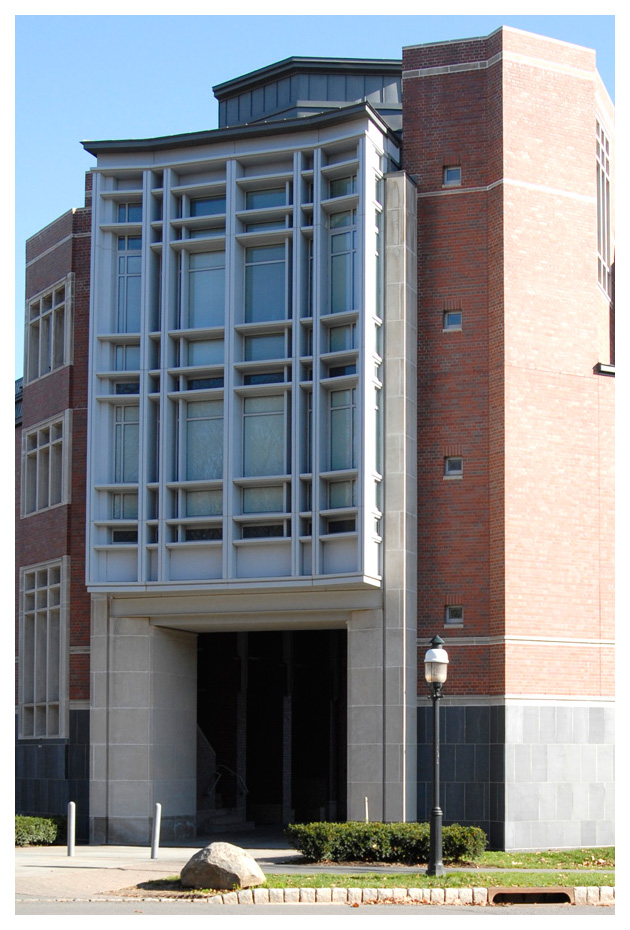Unfortunate Apses
The apse is an ancient and useful architectural motif, so it is hardly
surprising to find examples on campus. However, in order to be taken
seriously, the apse should be the focal point of a grand space in a large
building. Unfortunately, Princeton University seems to view the apse as
just another way to add curved walls to modest, rectangular office buildings.
Below are the apses of Fisher Hall (left) and McCosh Health Center (right).
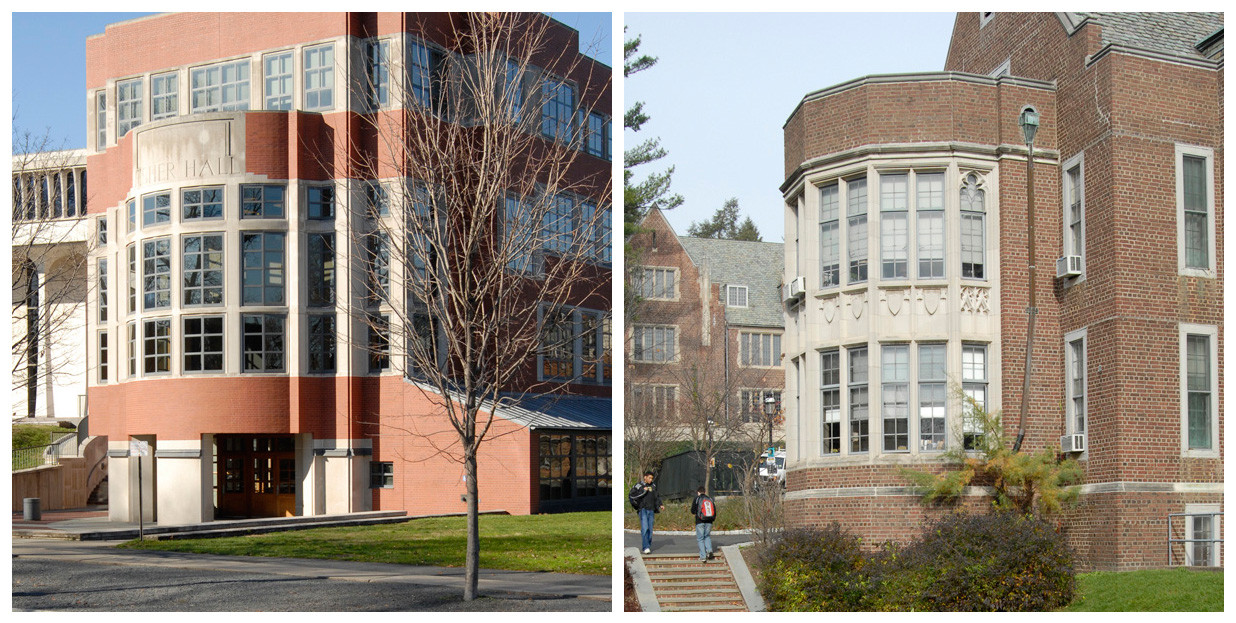
Wu Hall (below) has little apses on both ends!
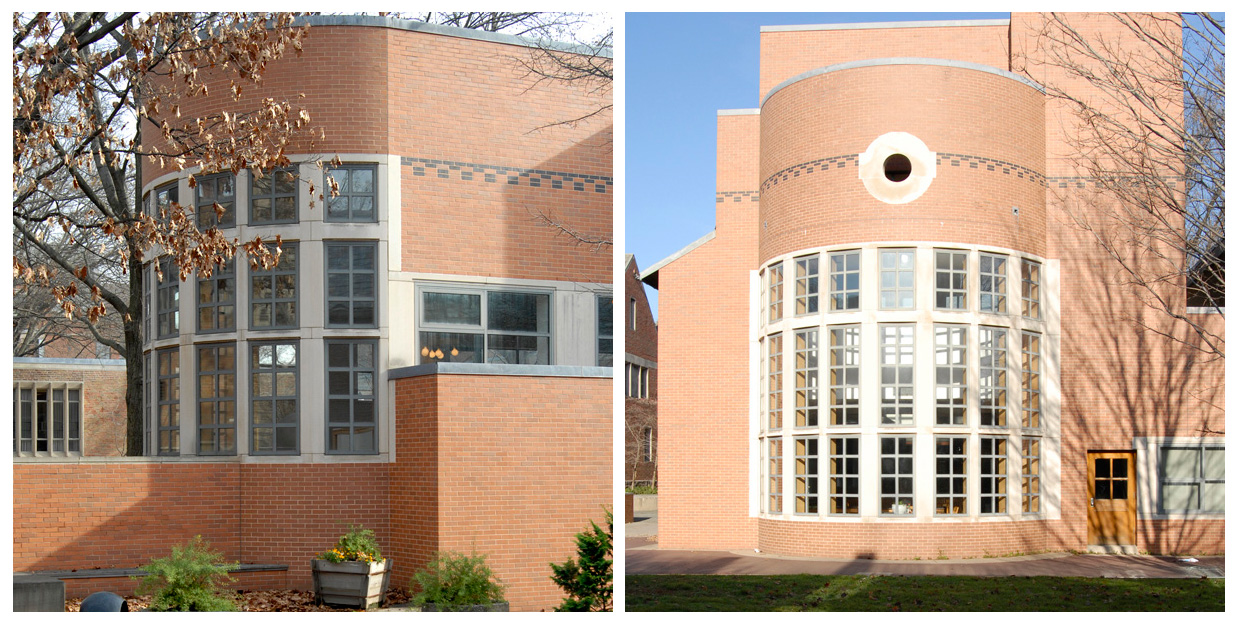
Corwin Hall (below left) has an apse-like entrance, and Bowen Hall (below
right) has a low, bloated apse.
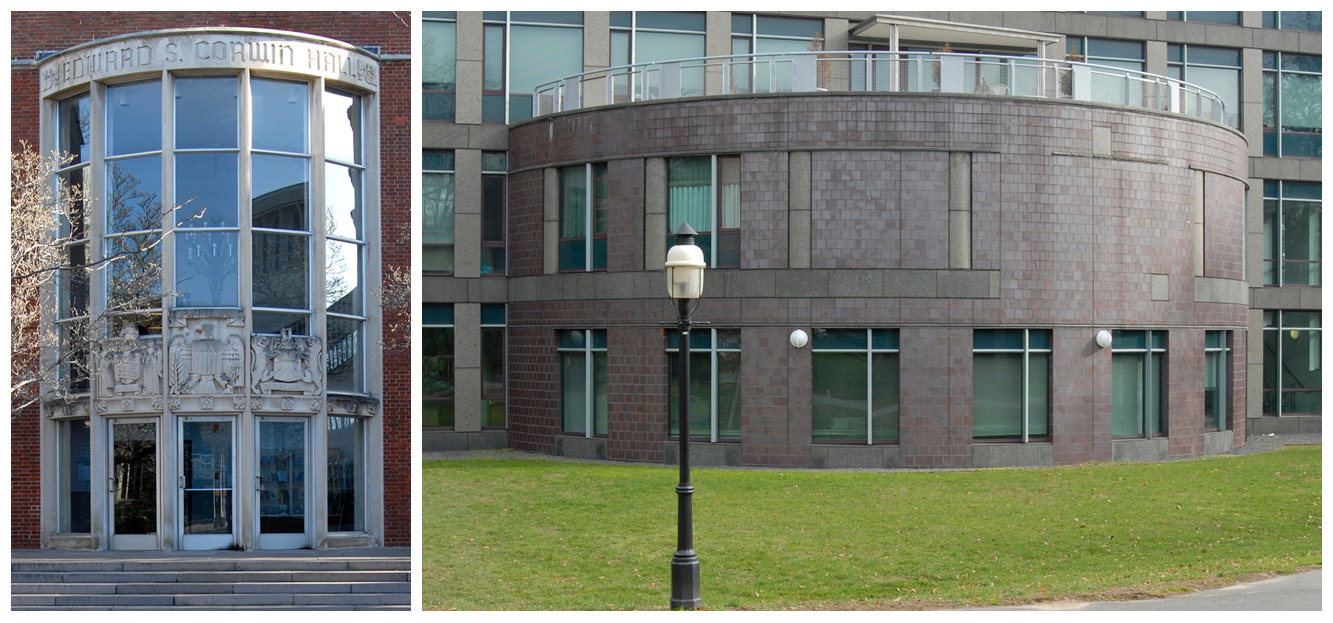
Finally, Lewis Thomas Lab (below left) incorporates a shallow apse in the
hope that it will not look too much like a Purina Dog Chow box, and the
Computer Science Building (below right) has a broad, apse-like entrance.
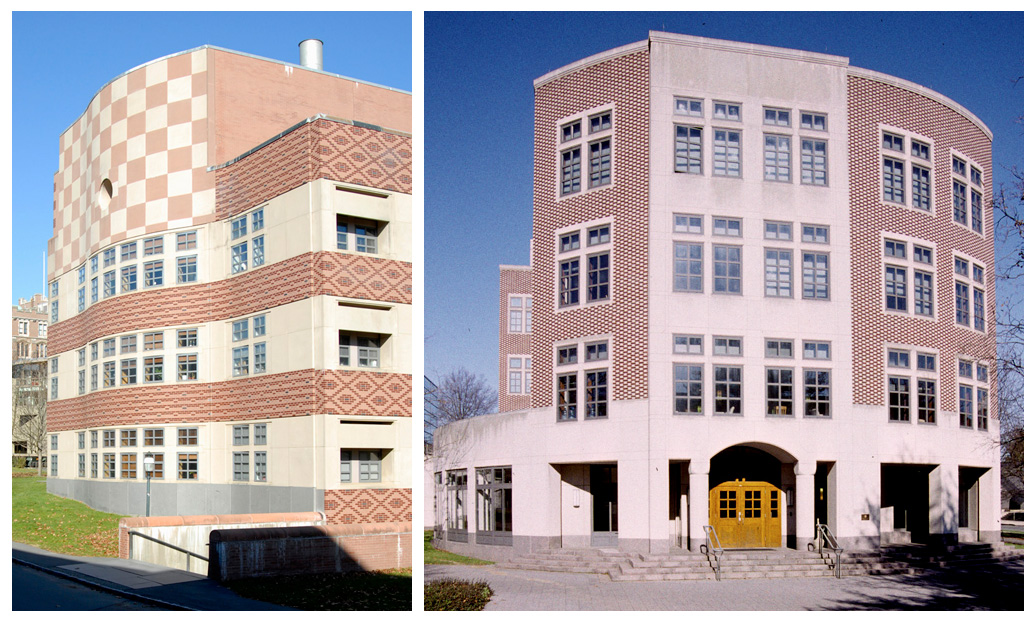
None of these apses are attached to really large spaces. Historically, the
apse is set in a basilica (below left), and the emperor or bishop was seated
in this space, illuminated by large windows. An alternative use is to
provide a space with a panoramic view; thus the bridge of an ocean liner such
as the Queen Mary (below right) might be a shallow apse.
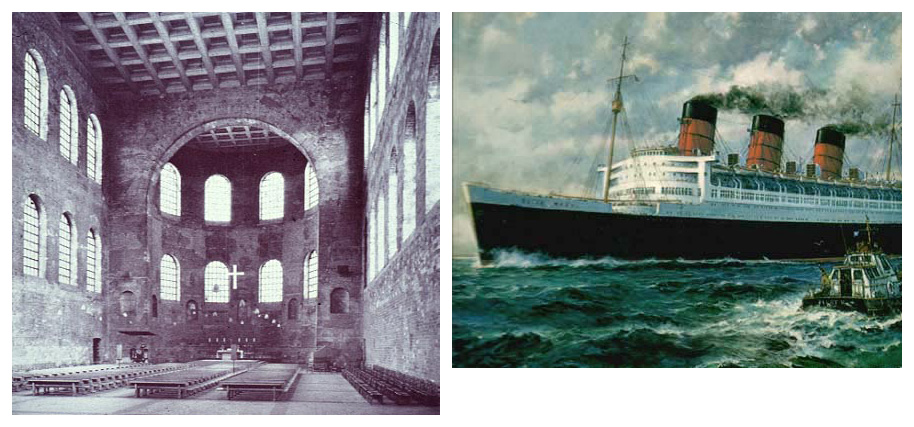
The only apse at Princeton that even remotely aspires to this ideal is one in
the dining room of Wu Hall (below top), where the buffet table is the focal
point of the apse. Elsewhere, the apses are subdivided into offices, hallways,
or little meeting rooms (as in Lewis Thomas, below bottom). Sic transit
gloria mundi, I suppose.
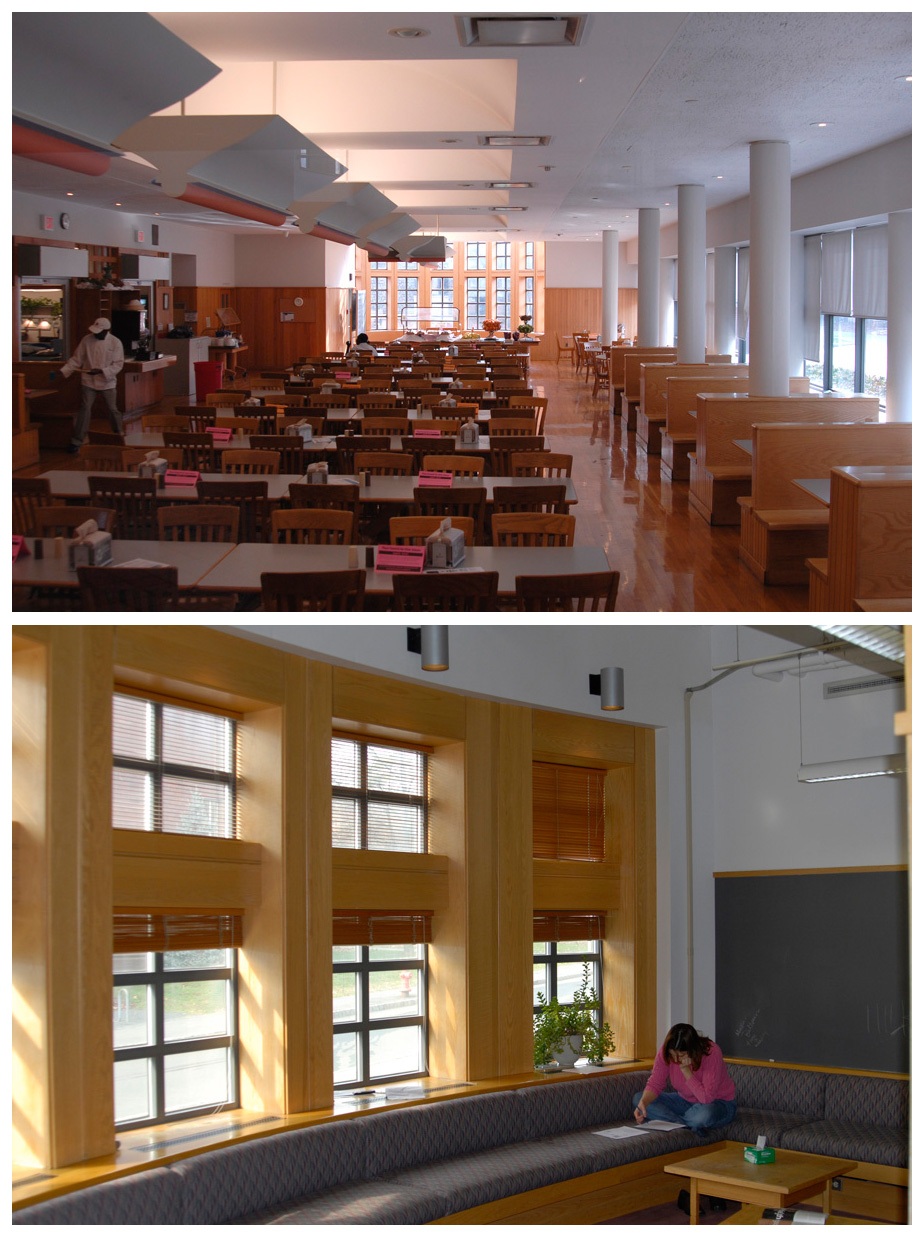
Once again we must ask, could things be worse? And again, yes! Dimly
recognizing that the conventional apse is a bit banal, the architect of
Bloomberg Hall (below) has built a "negative apse" of sorts: a concave bay window
through which one's view is even more highly restricted than one would have
through a conventional flat wall. Aaaarrrrghh!!
